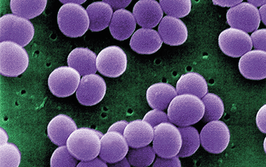Robust detection of RNA biomarkers for drug safety assessment in preclinical animal models by fully automated RNAscope® 2.5 LS Assay

contributed by ACD |
Preclinical drug safety assessment in animal models is used to evaluate the pathological effects induced by novel therapeutic agents. Here we present the use of the RNAscope® 2.5 LS Assay for the evaluation of biomarkers in tissues from three preclinical animal models. In this study we:
- Identify optimal pretreatment conditions for different tissues in different species
- Provide recommendations for control gene selection for tissue qualification
- Detect specific RNA markers in various FFPE tissues from multiple species
Abstract
Robust assays to evaluate biomarkers in tissue are needed for preclinical safety assessment and toxicity studies. Here we present the application of the fully automated RNAscope® 2.5 LS Assay on Leica BOND RX for RNA in situ hybridization in formalin-fixed paraffin-embedded (FFPE) tissues from three commonly used animal models (rat, cynomolgus monkey, and dog). We demonstrate robust assay performance with high signal-tonoise ratio and well-maintained morphology in 25 different tissues from each species. Based on these tests, we provide recommendations for proper control gene for sample qualification of each tissue type, as well as optimal pretreatment protocol selection. For specific target RNA markers, we successfully detected cell type specific markers such as CD31 (PECAM1) and CD68, proliferation marker Ki-67 (MKI67), and cell cycle marker Cyclin E1 (CCNE1), as well as apoptosis-related molecules Puma (BBC3), Fas (CD95), and DR5 (TNFRSF10B). This study demonstrates that the RNAscope® 2.5 LS Assay can be an attractive platform for biomarker analysis in tissues for preclinical safety assessment and general animal studies.
Log in or register to read this article in full and gain access to The Pathologist’s entire content archive. It’s FREE!




















